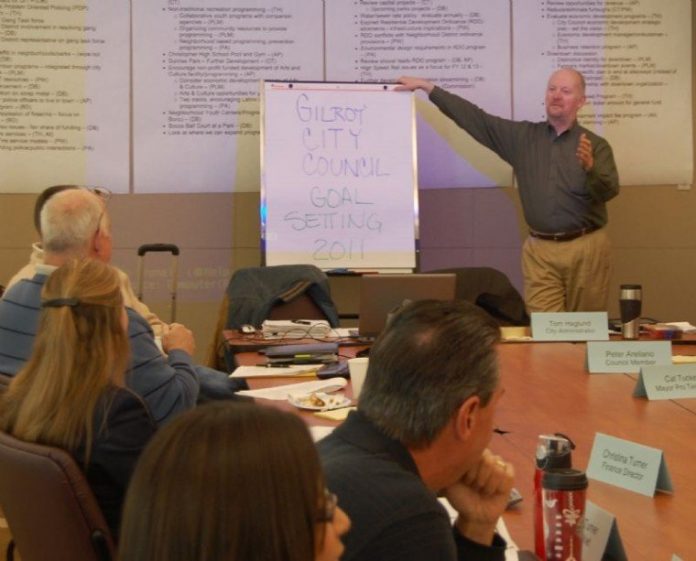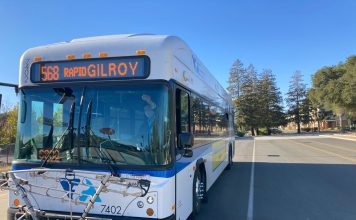Members of the Gilroy City Council discussed vandalism,
downtown, the city’s gang task force and homelessness issues
Friday.
Homelessness:
City Community Development Director Kristi Abrams told the Gilroy City Council the city had the highest number of homeless people per capita of any city in Santa Clara County.
The city also doesn’t receive it’s fair share of funding to combat homelessness, Abrams said.
“Homelessness is different today than it was 10 years ago,” City Councilman Dion Bracco said. “It’s not just bums anymore. It’s families.”
GPD Chief Denise Turner said the city needed a one-stop homeless shelter, and local homeless advocate Jim Currier has offered his building on Monterey Road as a possible location.
Currier said he’s spent more than $80,000 revamping his building, and needed to know from the Council if they planned on taking up his offer to donate the building rent-free for five years.
“We’ve got to get on this building or off this building,” Currier said. “We gotta know in the next month or so if it’s doable.”
The Council recommended city staff should pool all groups working on homelessness in Gilroy together to open a year-round homeless shelter.
“There’s a lot of different pieces of the puzzle,” Abrams said.
Vandalism:
Bracco said the city was spending about “five grand a month” on cleaning up graffiti in Gilroy, and the city needed to find a less reactive stance on vandalism.
“The cost to this community from graffiti vadalism has been very high,” Turner said.
Turner said the GPD would look into enforcing an older law that would allow suspending driver’s licenses of minors caught committing vandalism.
Revamping gang task force:
The Council also called for the reorganization of the city’s gang task force.
“It’s kind of floundering,” Bracco said.
Bracco said he wanted to model the gang task force after San Jose’s Gang Prevention Task Force.
Under a revamped gang task force, city officials and the GPD would work together on intervention and education methods to prevent local young residents from joining gangs.
Bracco suggested a boxing program for at-risk youths who might not think the local youth center was “cool.”
City Administrator Thomas Haglund said the city should inform residents of curfew laws and enforce them.
Councilman Bob Dillon said the city needed to more aggressively pursue prosecution of felons caught with firearms in Gilroy.
Improving downtown:
Restoring the “vitality” of downtown was the first point of discussion during the Council’s goal-setting session.
Bracco said Downtown Gilroy had received, undeservedly, a reputation of being unsafe.
While some downtown business owners have said they don’t think the area is safe, many others don’t feel that way, Bracco said.
“They’re fed up with some of these other business owners that are saying downtown is unsafe,” he said.
The Council discussed whether the GPD should have officers walking a downtown beat to improve the perception of safety.
GPD Chief Denise Turner said the feeling that downtown was unsafe was just a perception.
Turner said there was “not a predominance of crime in our downtown.”
Turner said the department would hold a community meeting Feb. 2 from 10 a.m. to noon in the GPD Community Room to unveil a program called problem-oriented policing, or POP.
Under POP, the GPD potentially would abandon random patrols and instead focus on areas where crimes tend to happen more often.
On Friday morning, Turner showed the Council a demonstration of crimreports.com, which allows residents to map and follow recent crimes in their areas.
Several Council members showed interest in pairing with the Gilroy Downtown Association to promote events downtown.
City Administrator Thomas Haglund said a citywide survey has revealed that most residents are optimistic about reviving downtown.
Councilman Peter Leroe-Muñoz said changes made to downtown need to follow an overall city theme or message.
Leroe-Muñoz suggested “Blending the best of the Central Coast and Silicon Valley” as an idea.














